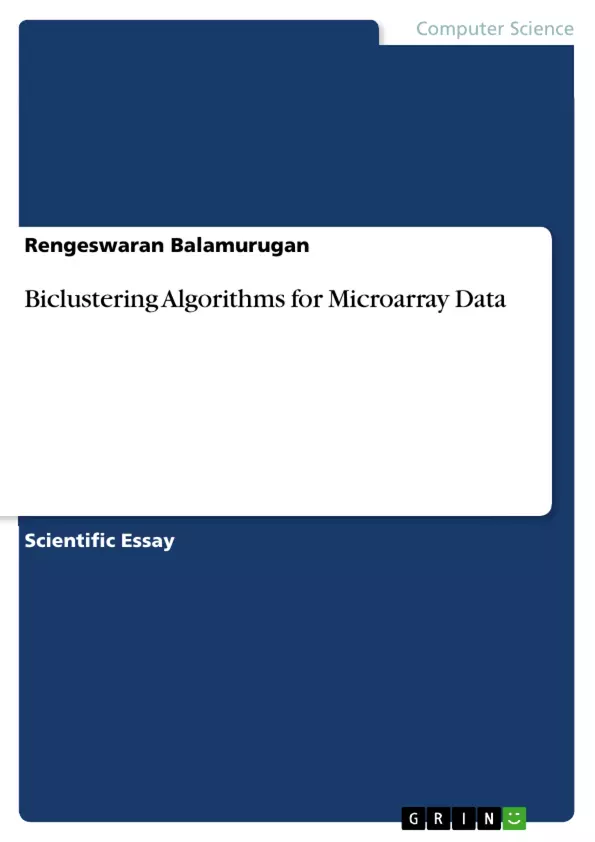This survey aims to analyze a large number of existing methods to biclustering, and classify them in accordance with the methods used to perform the search.
DNA microarray aims at extracting useful information that can be applied in medical and biological studies. Clustering is one of the most utilized data mining technique to analyze the gene expression data. Generally, there are subsets of genes that behave similarily or under subsets of conditions. Therefore, biclustering is introduced to identify the subgroups of genes and subgroups of conditions by performing simultaneous clustering of both rows and columns of the gene expression matrix, rather than clustering these two dimensions separately.
DNA microarray technologies have made it feasible to monitor transcription levels of tens of thousands of genes in a single expriement. A typical DNA microarray experiment involves a multistep procedure: fabrication of microarrays by fixing properly designed oligonucleotides representing specific genes; hybridization of cDNA populations onto the microarray; scanning hybridization signals and image analysis; transformation and normalization of data; and analyzing data to identify differentially expressed genes as well as sets of genes that are co-regulated.
Inhaltsverzeichnis (Table of Contents)
- INTRODUCTION
- BICLUSTERING METHODS
- Systematic Biclustering Algorithms
- Divide and Conquer Approach
- Greedy Iterative Search Approach
- Stochastic Biclustering Algorithms
Zielsetzung und Themenschwerpunkte (Objectives and Key Themes)
This survey aims to comprehensively analyze various existing methods for biclustering, focusing on their strengths and limitations. The objective is to provide a clear classification of biclustering algorithms, facilitating their application in the analysis of microarray data.
- Biclustering algorithms for microarray data analysis
- Classification of biclustering methods based on search techniques
- Systematic and stochastic biclustering approaches
- Evaluation of different biclustering algorithms
- Applications of biclustering in understanding gene expression patterns
Zusammenfassung der Kapitel (Chapter Summaries)
- INTRODUCTION: This chapter provides an introduction to DNA microarray technology and its role in analyzing gene expression data. It explains the concept of biclustering and its importance in identifying patterns in gene expression matrices.
- BICLUSTERING METHODS: This chapter presents a comprehensive overview of biclustering techniques, dividing them into two main categories: systematic search approaches and stochastic search approaches. It discusses the advantages and disadvantages of each category and provides examples of algorithms within each category.
- Systematic Biclustering Algorithms: This section explores systematic biclustering algorithms, further categorized into the "Divide and Conquer Approach" and the "Greedy Iterative Search Approach." Each approach is explained with specific examples and their strengths and weaknesses are discussed.
Schlüsselwörter (Keywords)
The key focus of this text is on biclustering algorithms, specifically for the analysis of microarray data. This includes terms such as gene expression, data mining, optimization, and the identification of co-regulated gene sets. The text delves into different approaches to biclustering, including systematic and stochastic methods, highlighting key concepts like divide and conquer, greedy iterative search, and the use of metaheuristics.
- Quote paper
- Rengeswaran Balamurugan (Author), 2017, Biclustering Algorithms for Microarray Data, Munich, GRIN Verlag, https://www.hausarbeiten.de/document/376903


